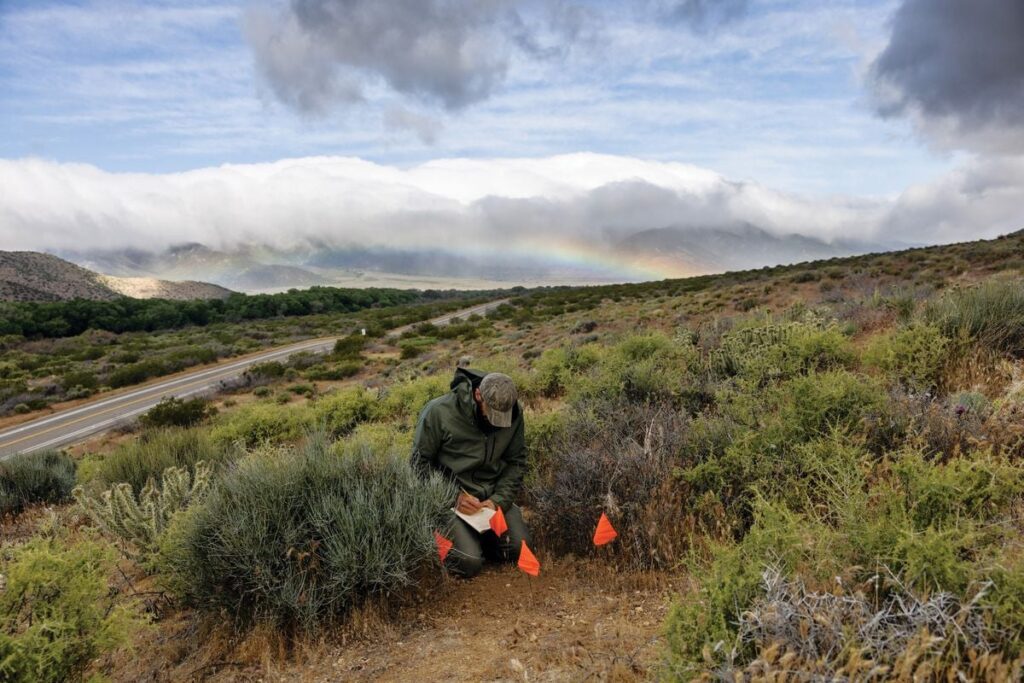The Art and Revival of Wildlife Tracking: A Journey Through Time and Nature
By Ben Goldfarb
Photographs by Mette Lampcov
Imagine kneeling in the California desert, sunlight warming your back, as you focus on a faint footprint in the sand—four teardrop-shaped toes and a uniquely shaped heel. You sense the essence of wildlife as you decipher the clues beneath your fingertips. Was it a bobcat? Maybe, but the thrill of the chase lies not just in the answer, but in the act of tracking itself.
On an April afternoon, I found myself grappling with the challenges of a wildlife tracking exam organized by Tracker Certification, part of CyberTracker Conservation—a nonprofit that’s been honing and certifying wildlife trackers for over thirty years. The sandy floodplain became our classroom. Surrounded by fellow participants deciphering everything from owl pellets to animal prints, the atmosphere buzzed with a palpable excitement, akin to a library on the brink of discovery.
The Science of Tracking: An Ancient Skill Revived
Tracking isn’t just a lost art; it’s an age-old skill that has contributed significantly to human evolution. In his book The Demon-Haunted World, Carl Sagan argued that those who could patiently observe their surroundings gained advantages that helped their bloodlines prosper. Tracking propelled our ancestors into hunting groups, cultivated language, and forged social connections.
Yet, as technology burgeoned, our reliance on screens overshadowed our primal instincts. Wildlife biology, now woven with satellite technology and drone surveillance, has altered the landscape dramatically. But while cameras and collars provide vast data, they often lack the tactile connection and intimate knowledge that traditional tracking offers. This compelling method is undergoing a renaissance, demonstrating its importance in conservation efforts and research.
Modern Ecological Applications
Today’s biologists are harnessing tracking to prevent wildlife conflicts and better understand animal behavior. In Washington, for instance, trackers monitor wolves to keep them away from livestock, while in Wisconsin, tracking studies help illuminate the movements of deer and lynx. The beauty of modern tracking is its democratic nature; trained volunteers contribute invaluable data that complement academic findings.
With nearly 700 evaluations conducted over the past two decades, Tracker Certification has amassed a diverse group of certified trackers—from teachers to photographers, each motivated by their passion for nature. Casey McFarland, the energetic executive director, deems this movement necessary: “You’re helping to revive essential field skills,” he stated, underscoring the importance of these ancient practices in modern ecology.
Insights from Indigenous Traditions
The tracking prowess of Indigenous cultures offers invaluable lessons. Ahíga Snyder, a Diné wildlife researcher, emphasizes tracking’s cultural and historical significance within the Diné community. It’s a thread that connects generations through stories of animals and their tracks, showcasing how deeply intertwined humanity is with nature.
As the world becomes more urbanized, tracking skills can be a bridge back to understanding our environment. Elizabeth Marshall Thomas recounted her experiences among the hunter-gatherers of the Kalahari Desert—their acute observation skills broke the barriers between species and highlighted the symbiotic relationships within ecosystems.
A Hands-On Learning Experience
Following my own tracking experience in California, I reflected on my narrow miss of certification. Although I’d misidentified prints and enjoyed a profound engagement with the land, the real value lay in the understanding: each footprint tells a story about the animal that left it.
The evaluation process taught us that every leavings—scat, trails, and diggings—are interconnected narratives of life. Every dent in the earth, every scrap of food, reflects the complex web of existence that surrounds us.
With each question answered during the exam, I discovered the unique markings of local fauna, whether it was the rounded prints of a coyote or the distinct nibbles on desert flora. The sense of fulfillment from this deep observation created a bond between me and the wildlife, reminding me that every tracker ultimately seeks to connect and understand the natural world.
Closing Thoughts: Connection Through Tracking
As I concluded my evaluation, a sense of melancholy settled in. The emphasis on the sheer amount of life around us, juxtaposed against biodiversity loss, hit home. While our planet faces unprecedented challenges, our ability to track and interpret wildlife offers hope. Each footprint we interpret is a reminder of the resilience of nature and a call to responsibility.
This growing interest in tracking not only reflects a yearning to reconnect with nature but also showcases the importance of accessible education. Initiatives that help underrepresented communities engage with nature foster inclusivity and enrich the tracking community.
As I signed off from my experience and returned home, I realized that encounters with nature—no matter how fleeting—reshape our perspectives and can lead to meaningful engagement in conservation and wildlife management.
The AI Buzz Hub team is excited to see where these breakthroughs take us. Want to stay in the loop on all things AI? Subscribe to our newsletter or share this article with your fellow enthusiasts.




